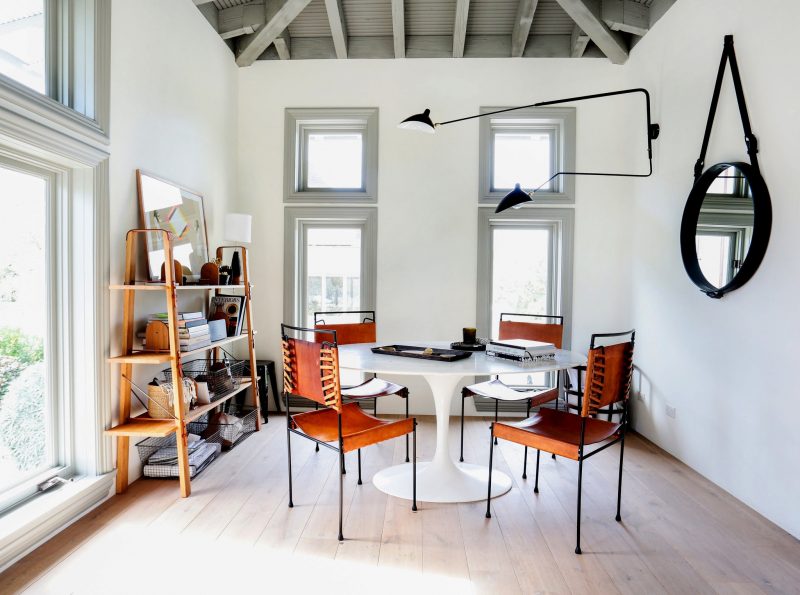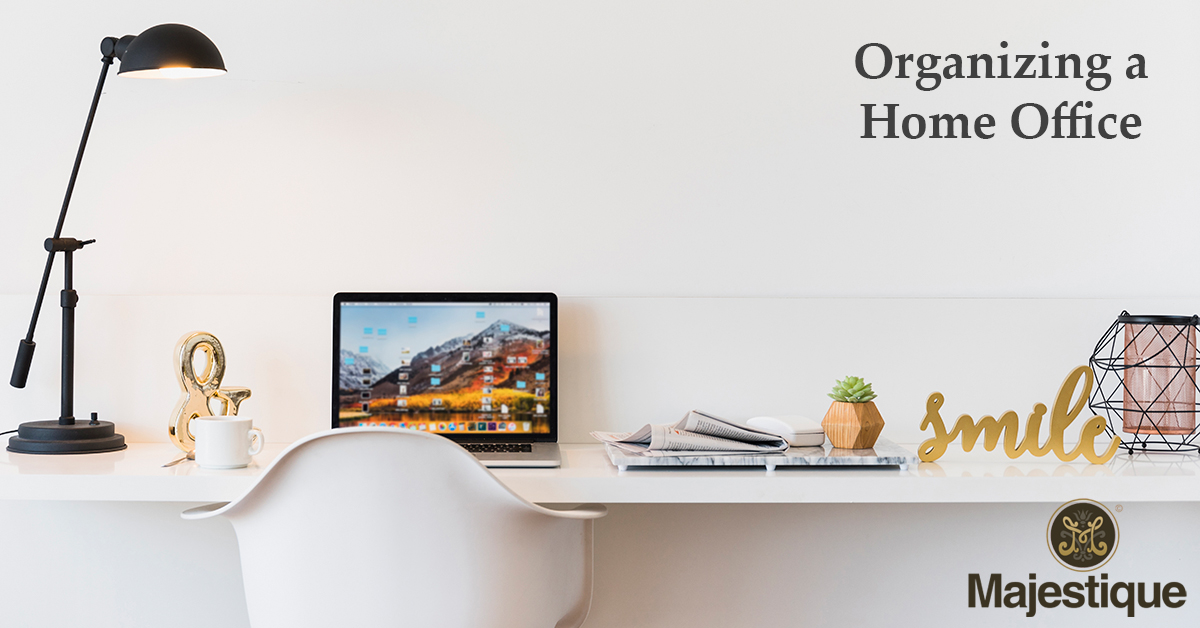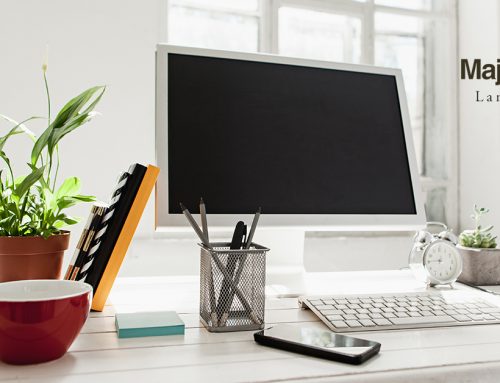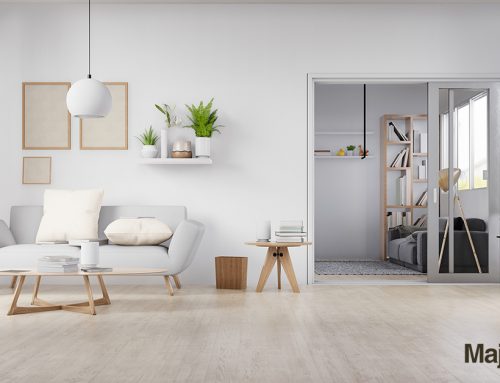Setting up a home office can be as simple as placing a desk in a spare room or opening up a laptop on a kitchen table. But if you work from home on a regular basis, you deserve more than a makeshift workspace — or a replica of the claustrophobic cubicle you left behind.
“Make your home office fit your personality and interests,” said Lisa Kanarek, the author of “Organize Your Home Office for Success” and the founder of a work-from-home blog called Working Naked. “Without the confines of a corporate setting, you can create a space that inspires you to be productive and creative. The goal is to design a place you look forward to working in each day, even though your commute may be only seconds.”

Start by making a list of everything you need to work happily at home — whether that’s an abundance of storage space or natural light, as in this office.
Below, 10 tips to help jump-start your home office makeover.
Take Inventory:
“I recommend making a list of the supplies you’ll need for work on a regular basis, as well as any files or records you need to keep,” said Melissa Michaels, an author and decorating blogger in Seattle. “Consider the number of hours a day you’ll be spending on a computer or if you need to have a place to meet clients in your home.”
Add to your list any health considerations or preferences, including if you would do better at a standing desk than at the kitchen island. “Assessing your own situation and needs will give you a starting point for what your priorities should be as you are selecting appropriate office furniture.” And beyond practical matters, consider what will make you want to be there, whether that’s natural light from a nearby window or an inspiring piece of art.
Blend it In:
“To carve out a home office in a main living area, look for aesthetically pleasing ways to create a visually distinct but cohesive room,” said Ms. Michaels, noting that tall plants work well as organic dividers between a desk and a living space.
“The struggle is always to address the function of the space while not sacrificing beauty,” said Donna Mondi, an interior designer in Chicago. “Assuming the home office is connected to the main living space, it needs to flow aesthetically and complement the overall design scheme.”
Ms. Mondi, for example, made space in a client’s living room for an office nook by placing a stylish writing desk with metallic legs and a black faux-crocodile top in a corner near the window. “This particular spot had lots of natural light, calm and peaceful colors,” she said. “And rich textures made this the perfect place to escape to.” When your home office is “in a more formal part of the home,” she added, “the furnishings need to reflect that level of formality, so everything blends in seamlessly.”
Make Furniture do Double-Duty:
Look at the furniture you already have and consider whether you could use it for storage in your home office, suggested Ms. Kanarek, the author and work-from-home blogger. She uses an antique dresser in a spare bedroom to store her printer and office supplies, she said, and a coffee table with shelves below or storage inside could be used to store files or supplies while you work on the sofa.
“One of my clients uses her dining room as a home office during the day and stores all of her equipment and supplies in a large sideboard,” she said. “When she entertains, no one knows that along one wall is a fully functioning home office.”
Don’t sit with Your back to the Door:
“You want your desk to feel like it has a commanding view of the room,” said Anita Rosenberg, a space consultant and practitioner of feng shui in Los Angeles. “People do the built-ins because they don’t have the space, and then they are staring up against the wall. That’s not a great place to be for 12 hours a day.”
What you want to aim for is the “command position,” which enables you to see the front door without being in direct line with it, said Judith Wendell, a Manhattan-based feng shui consultant, and confers a feeling of empowerment. If the only option is to have your back to the front door, she added, place a mirror on the wall in front of you so you can see the front door in the mirror.
Keep Your Office out of the Bedroom:
“Obviously, you don’t want to take your work to bed with you,” Ms. Wendell said. “Perhaps less obvious is that we don’t want our work to have sleepy or lazy chi.”
Another reason for separating the two, Ms. Rosenberg said: “You don’t want to go to sleep thinking about the work you have to do or be stressed out by the electronics in your bedroom.”
Put it in the Closet:
If the only space available is in your bedroom, a bureau with doors that hide your computer, books, papers and printer at night is a good workaround. “Many times we can steal a small closet and create an office nook that’s perfectly appointed,” said Ms. Mondi, the interior designer. “Built-in cabinets will make the most efficient use of space and are the best way to incorporate as much function as possible.”
Just keep in mind that you’ll need extra lighting and power for computers, printers, and chargers. And “for an unexpected touch add wall covering” to the inside of the cabinet or bureau, she said, “to give your office its own personality and make it feel less like a closet.”
Hide it Behind Cabinetry:
If you don’t have a spare closet, you can still conceal your workspace. “With some of our new home projects, we’re incorporating hidden offices into the kitchen,” Ms. Mondi said. “They are concealed by cabinet fronts, so it disappears into the kitchen when not in use.”
Another design trick, she said, is to add paneling and create a hidden wall of storage that essentially disappears: “It’s a great way to camouflage necessary evils.”
Accessorize:
Ms. Mondi also uses art, light fixtures and other decorative elements to ensure that any home office she designs isn’t “all business,” she said.
“The best office spaces tell a story of the person” they belong to, she added. “Be creative when choosing colors, materials, lighting, accessories, and you can easily turn it into your favorite room in the house.”
Upgrade Your Desk:
“I’m a big fan of the writing desk, rather than the clunky, functional desks of the past,” Ms. Mondi said. “If you’re even the least bit tech-savvy, you won’t need much in the way of file storage. A small drawer or two gives you enough space for small accessories. What you gain is a lighter piece of furniture that is typically far more beautiful.”
Or do away with it altogether:
“The idea that you have to have a desk, file cabinet, bookcase and storage cabinets to work from home no longer applies, especially if your main piece of home-office equipment is a laptop,” Ms. Kanarek said. “I use a closet in a spare bedroom to store supplies and files, but most of the time I work on my porch, on the family room sofa, at a nearby coffee shop or wherever I feel inspired to work that day. All I need is my laptop and Wi-Fi.”
Source: https://www.nytimes.com/2017/11/07/realestate/designing-home-office.html






